# Clusters
The Service Lifecycle Management enables the installation of new clusters and the integration of existing clusters (managed clusters). To deploy a service offering into a cluster, the corresponding deployment capability must have the deployment type of the service offering defined in the property supportedDeploymentTypes(see section Deployment Capabilites for details).
# Install new clusters
A corresponding cluster deployment capability must be available to allow the installation of a new cluster. That deployment capability must have an INSTALL action and a definition for clusterMemberTypes.
Example from the official K8S deployment capability (opens new window):
{
...
"actions": {
...
"INSTALL": {
"capabilityActionClass": "AwxCapabilityAction",
"capabilityActionType": "INSTALL",
"awxRepo": "https://github.com/eclipse-slm/slm-dc-k8s",
"awxBranch": "main",
"playbook": "install.yml",
...
},
...
"clusterMemberTypes": [
{
"name": "k8s_master",
"prettyName": "Control-Plane Master",
"minNumber": 3,
"scalable": false
},
{
"name": "k8s_node",
"prettyName": "Worker",
"minNumber": 1,
"scalable": true
},
{
"name": "haproxy",
"prettyName": "External Proxy",
"minNumber": 1,
"scalable": false
}
],
...
}
# Install new Kubernetes clusters
The Service Lifecycle Management provides an official K8S deployment capability (opens new window), which supports the installation of new clusters. At least 5 hosts are required to set up a new Kubernetes cluster.
Example:
Go to the
Resourcetab and press the+button in the bottom right corner.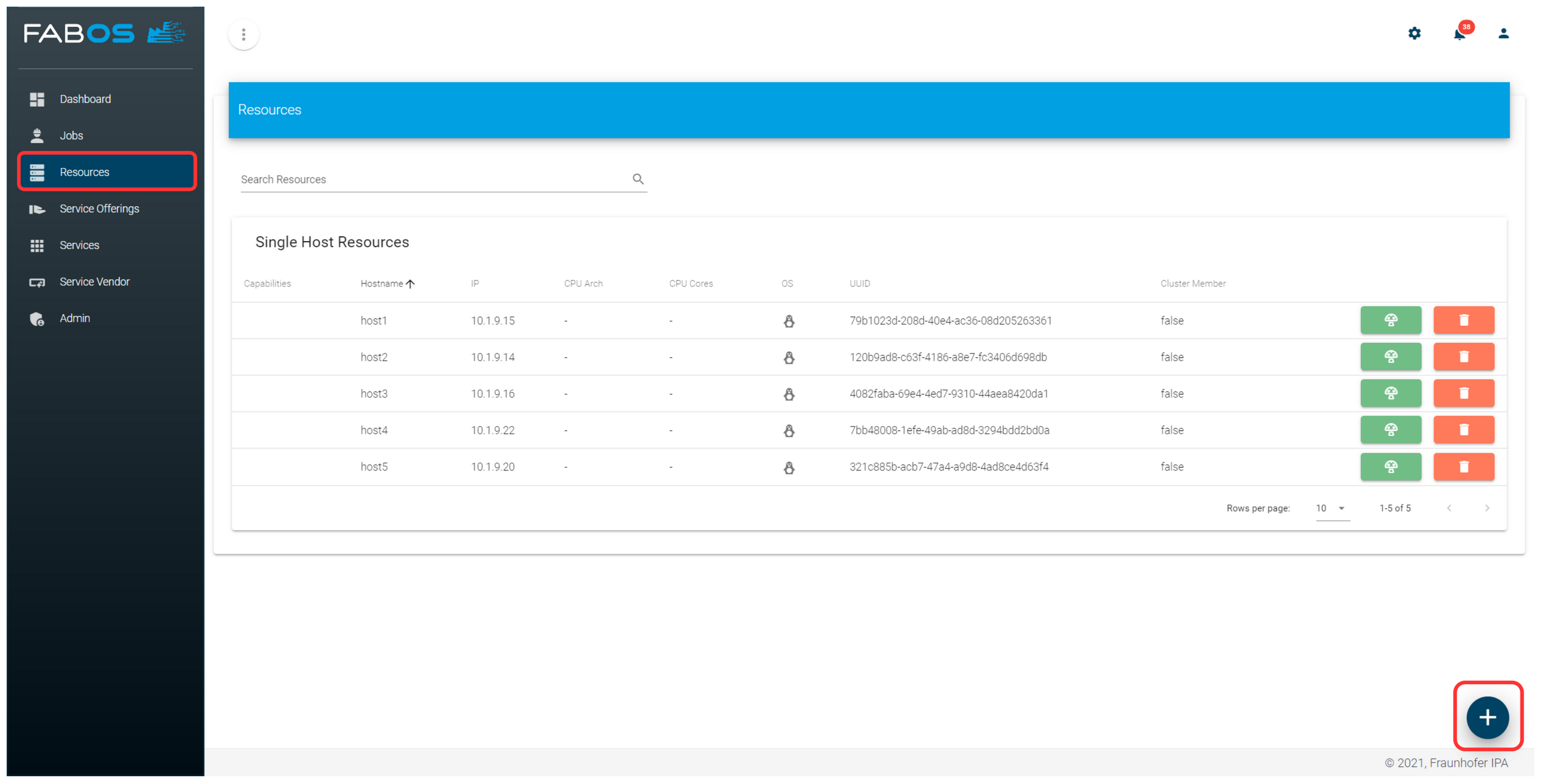
Select
ADD EXISTING.
Select
Cluster.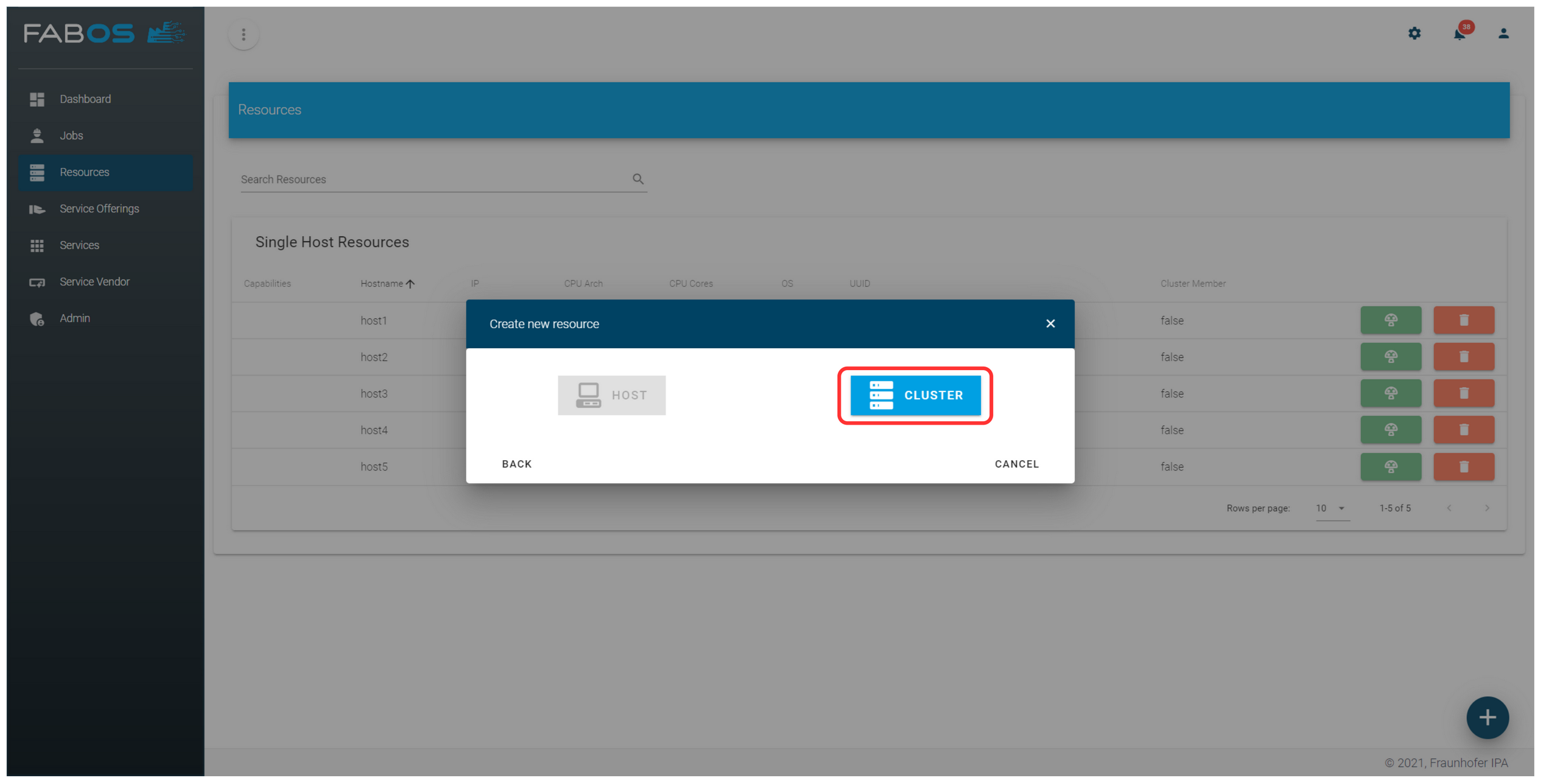
Configure cluster
- Select
Create MethodeUse existing resources. - Select
Cluster TypeKubernetes. - Assign the hosts to the member types.
- Press
CREATE, and the automation to set up your Kubernetes cluster will be triggered. It will take a few minutes.
- Select
<img :src='/img/figures/use/cluster-create-new-4.png')">
- After the automation has finished, your new Kubernetes cluster will be shown in the
Resourcesoverview.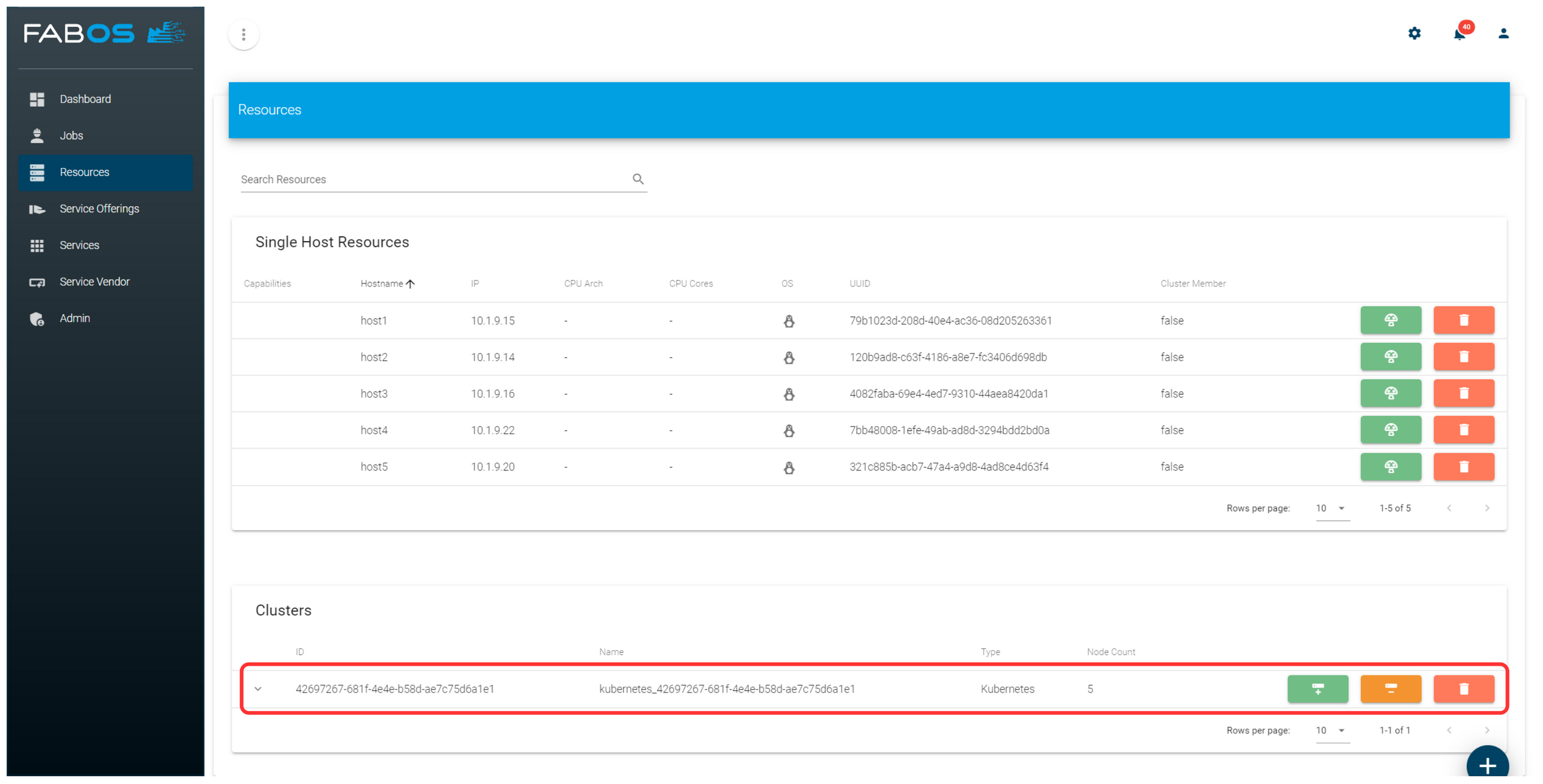
# Add managed clusters
Already existing clusters be added as managed clusters. To allow the addition of a managed cluster, a corresponding cluster deployment capability must be available. That deployment capability must have an INSTALL action with the property skipable: true. Configuration parameters in the action, can be used to query information required for accessing the cluster.
Example from the official K8S deployment capability (opens new window):
{
...
"actions": {
...
"INSTALL": {
"capabilityActionClass": "AwxCapabilityAction",
"capabilityActionType": "INSTALL",
"awxRepo": "https://github.com/eclipse-slm/slm-dc-k8s",
"awxBranch": "main",
"playbook": "install.yml",
"skipable": true,
"configParameters": [
{
"name": "kubeconfig",
"prettyName": "Kube Config",
"description": "...",
"secret": true,
"valueType": "FILE",
"requiredType": "SKIP"
},
{
"name": "namespace",
"prettyName": "Namespace",
"description": "...",
"secret": true,
"valueType": "STRING",
"requiredType": "SKIP"
}
]
},
...
},
...
}
# Kubernetes Clusters
The Service Lifecycle Management provides an official K8S deployment capability (opens new window), which supports managed clusters. It requires a kubeconfig file (opens new window) and a namespace in the cluster. The Service Lifecycle Management will deploy all services into this namespace.
Example:
Go to the
Resourcetab and press the+button in the bottom right corner.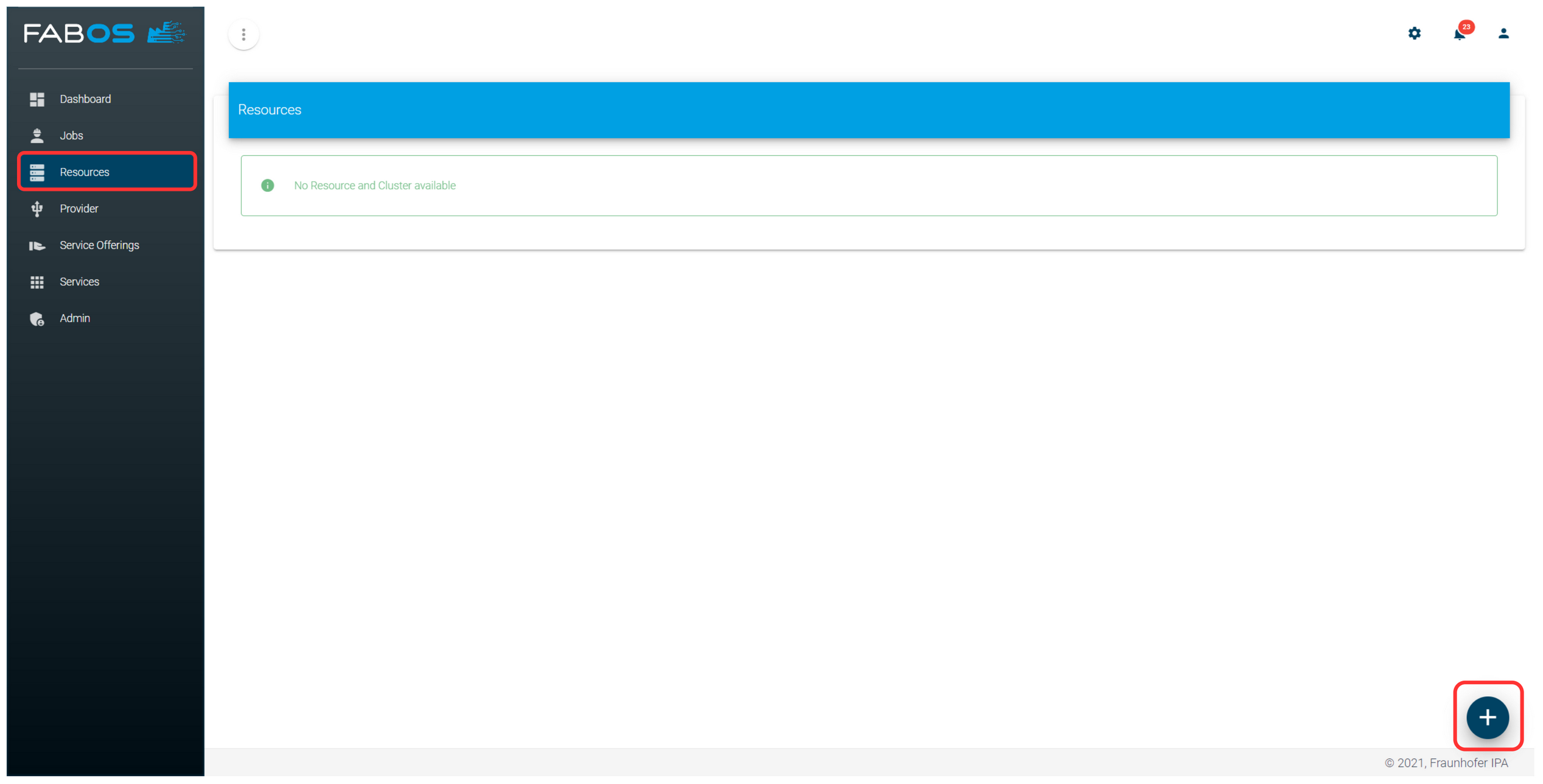
Select
ADD EXISTING.
Select
Cluster.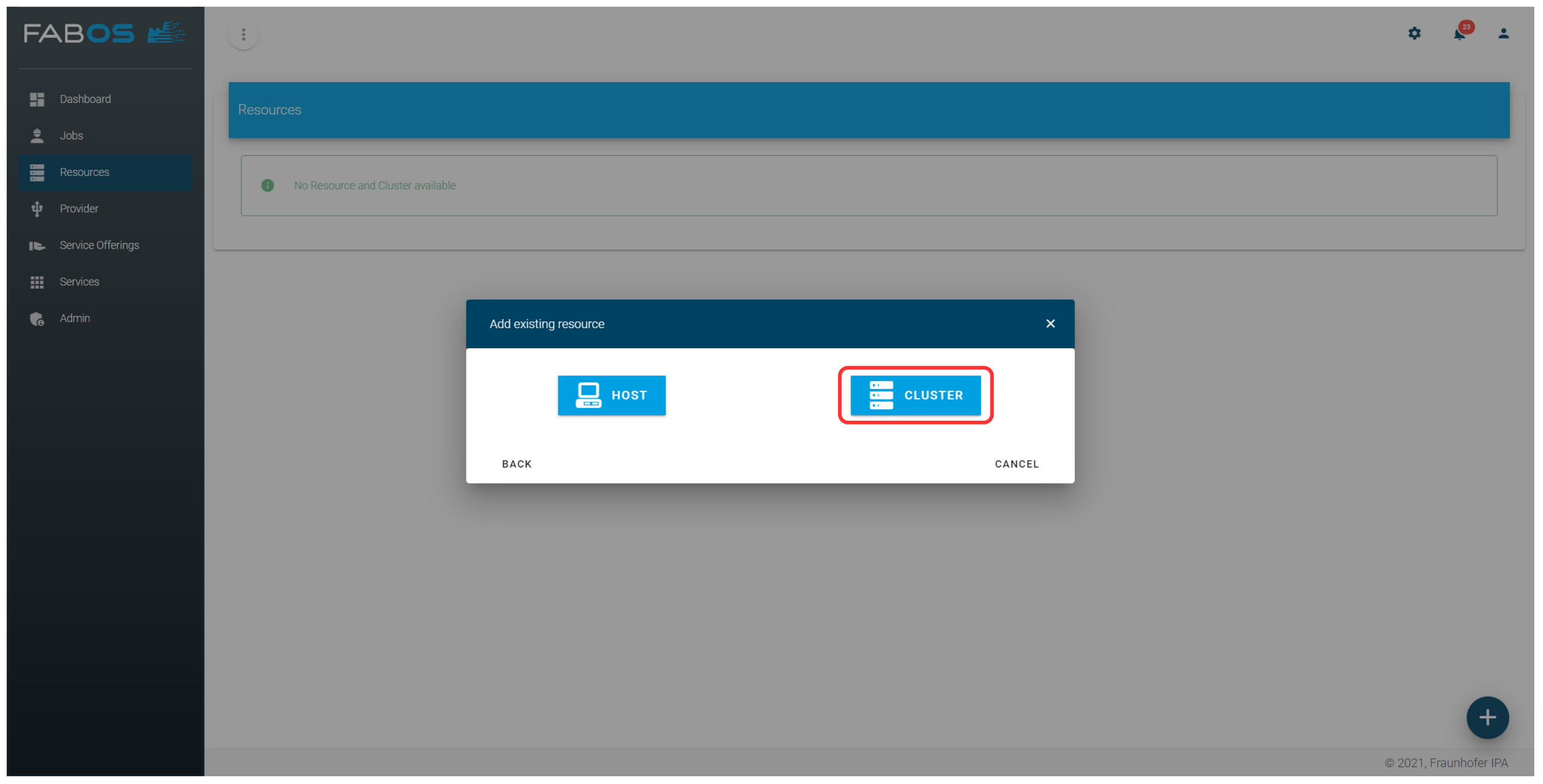
Add details of cluster
- Select
Cluster TypeKubernetes. - Upload or paste the kubeconfig file of the Kubernetes cluster you want to add.
- Enter the name of the namespace where the Service Lifecycle Management should deploy your services.
- Press
ADD, and your Kubernetes cluster will be added.
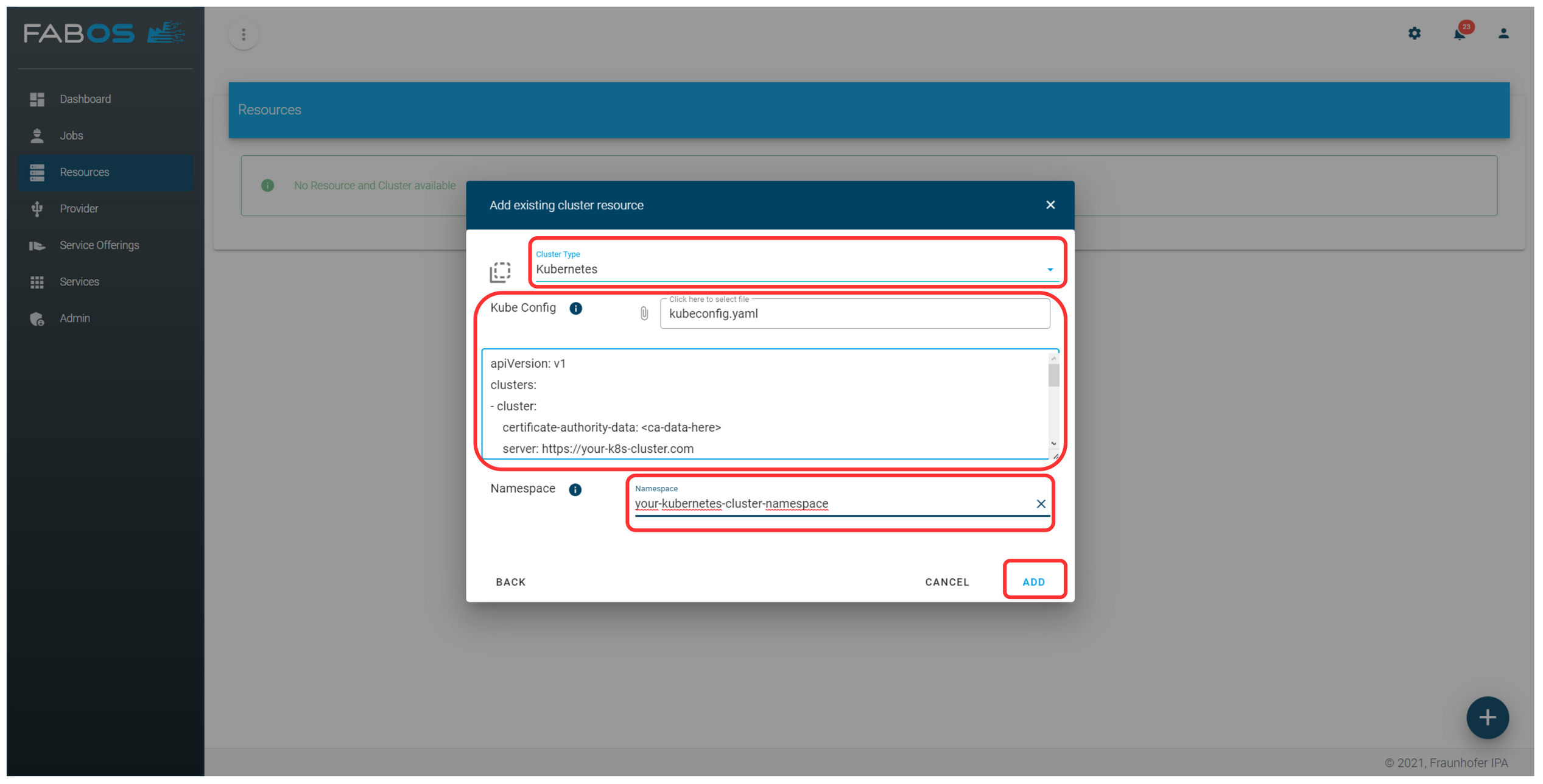
- Select
Your Kubernetes cluster will be shown in the
Resourcesoverview.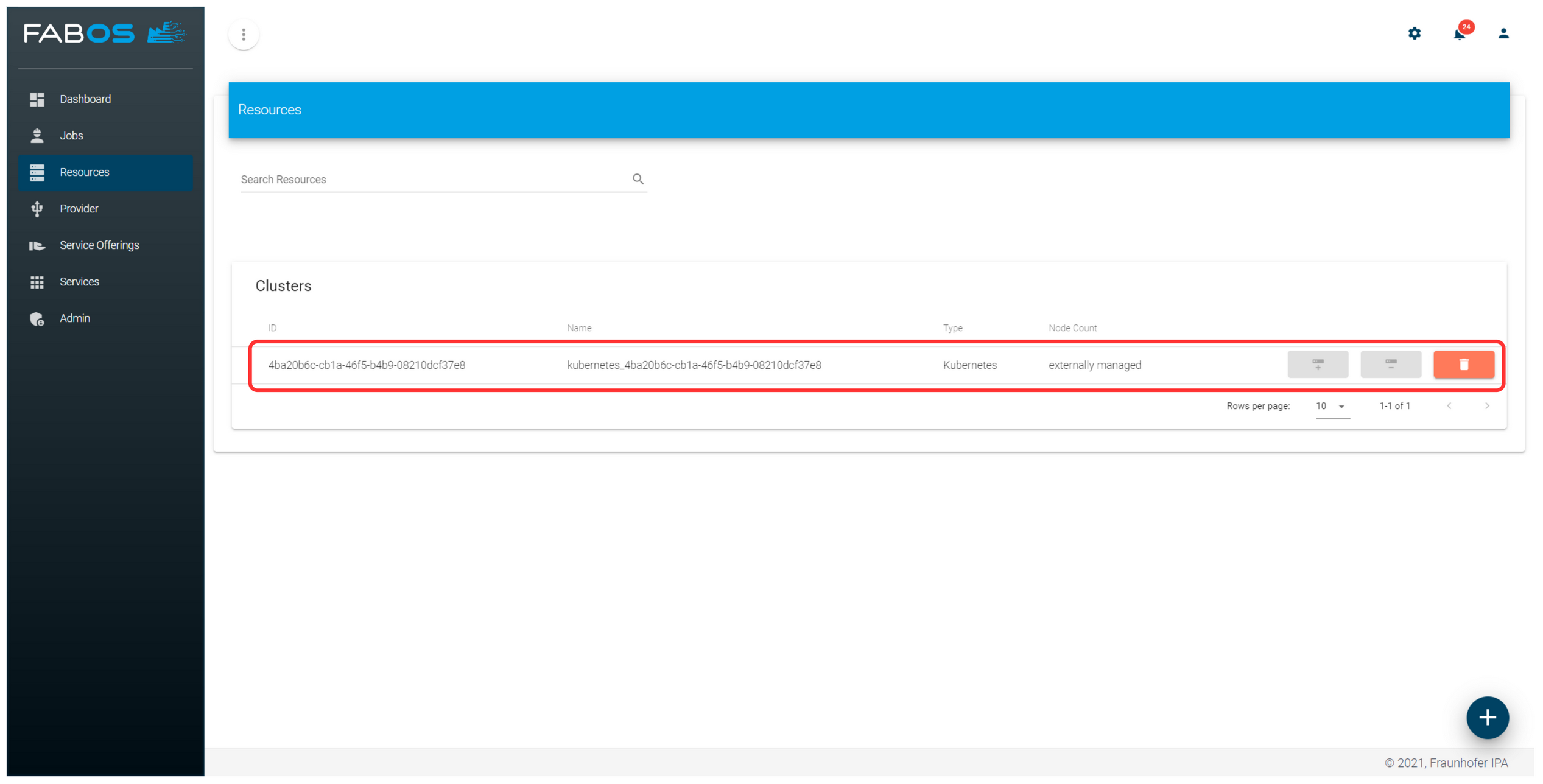
← Capabilities Profiler →
